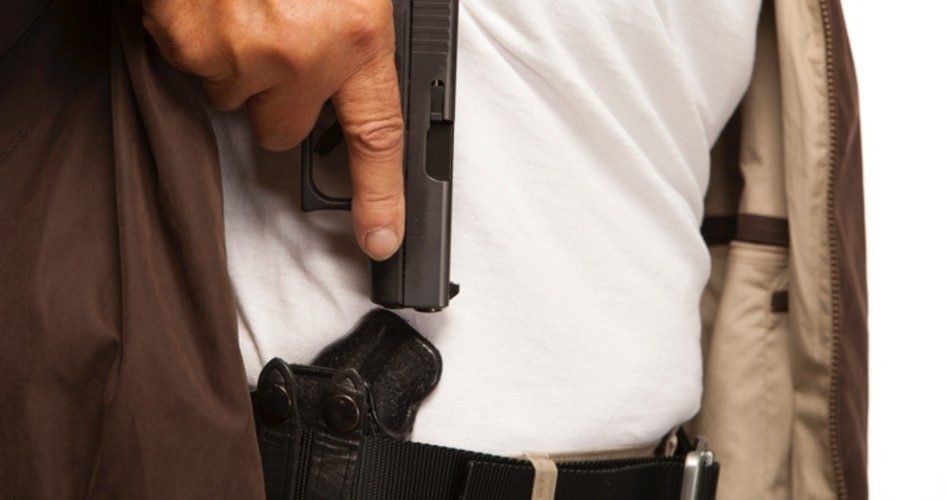
During the Pike County, Kentucky, school board hearing last Wednesday night, the board reached a unanimous decision to approve arming teachers and staff at the county’s 25 schools. Predictably, Executive Director Jon Akers of the Kentucky Center for School Safety said that “every educational group across the country” opposes the idea.
Said Akers, the idea “scares me to death … arming people who are not trained equal to that of law enforcement officers is risky.”
Akers’ argument, like so many being offered by people such as him, just doesn’t hold any water. Under the new proposal, school teachers and staff could volunteer to carry concealed at the schools, but only after passing a background check, a drug test, a mental evaluation, and a qualification course. And they would have to requalify regularly.
Teachers’ unions are nearly out of arguments, especially in light of the massacre of innocents in Florida on Valentine’s Day. Those innocent students had no chance to defend themselves because the school was declared a “gun free” zone. Those opposed to arming teachers say that such programs cost too much, that teachers should teach and not be cops, that there’s a risk of a “shootout at the OK Corral” with teachers and staff accidentally shooting bystanders and themselves during an active shooter situation, that funds ought to be spent elsewhere (for pencils and mental-health advisors, etc.), that the teachers are already overworked and underpaid, etc.
But common sense is finally reaching local school boards. They are increasingly recognizing that “when seconds count, the police are minutes away.” Those boards are realizing that teachers and staff members, with skill at arms, could end a potential shooting immediately or within seconds, while the police are still on their way.
In Sidney, Ohio, for example, there are 3,400 students in schools where teachers are trained to confront such a situation rather than waiting for law enforcement to arrive. Schools there have dozens of biometric safes containing firearms tucked away discreetly in closets and classrooms but accessible immediately by those already trained. Said John Scheu, the school superintendent, “We can’t stop an active shooter but we can minimize the carnage.”
In Texas there are 172 school districts where, for more than a decade, teachers and staff have been allowed to carry weapons after having undergone specialized training. That training is rigorous, to say the least, and often exceeds the training required of law enforcement. After passing various drug tests and background checks, along with a mental-health exam, those teachers and staff volunteering to protect students must undergo 80 hours (that’s two weeks!) of training by the Texas Commission on Law Enforcement.
Testimonies from those teachers and school administrators who have taken the training validate the expectations of those school boards. In Salt Lake City, for instance, Kasey Hansen, a special-ed teacher, initially was afraid of guns: “I was honestly scared of guns. I thought that they would just randomly go off, and that they were dangerous … but holing up inside a classroom and hoping the shooter doesn’t see [me] didn’t seem like a good idea. So I decided to take a class to get a concealed carry permit.”
A language-arts teacher from Ohio took a class to get her concealed-carry permit (Ohio is one of 10 states that currently allow trained teachers and staff to carry on school grounds), saying, “When you have these shootings, it’s about the high number of casualties, and these shooters think they’re successful when more people die. But we can stop them and if I can save the life of just one student then I think it’s worth carrying a gun.”
Those who take the FASTER (Faculty/Administrator Safety Training and Emergency Response) program offered by the Buckeye (Ohio) Firearms Foundation have testified to its effectiveness. Mason, a librarian, stated, “Time is of the essence. Standing by and waiting to be rescued will only cost lives,” while Julie, a secretary, pointed out that “FASTER isn’t just about firearms. It’s about being prepared before, during and after a violent event. I feel confident I am better prepared to save lives before, during and after. I am changed thanks to this training.”
Some schools are removing “gun free zone” signs and replacing them with variations on this theme: “Be aware: There are armed personnel on campus.” As Texas Governor Greg Abbott told the president at a White House meeting last Monday, these signs warn “anybody coming on campus that they — if they attempt to cause any harm — they’re going to be in trouble.”
As more and more of these signs are replacing the previous signs telling potential shooters that schools are a “safe shooter hunting preserve,” it’s reasonable to expect fewer and fewer school shootings. And that, hopefully, will serve to quiet the mainstream media, who use every shooting to push the anti-gun agenda. It’s helpful to remember that, according to the National Rifle Association (NRA), between two and two-and-a-half million assaults are neutralized every year merely by the presence of an individual carrying a firearm and who is trained to use it if necessary. These “non-events” scarcely rate a paragraph in local papers, much less headlines from a media with an anti-gun agenda.
An Ivy League graduate and former investment advisor, Bob is a regular contributor to The New American magazine and blogs frequently at LightFromTheRight.com, primarily on economics and politics. He can be reached at [email protected].
Related article:



